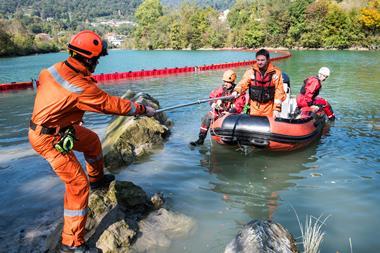Firms must align climate risk assessments with the recommendations of the TCFD to build greater resilience - Verisk Maplecroft
Across the globe, 414 cities – home to around 1.5 billion people – are at high or extreme risk from a combination of pollution, dwindling water supplies, extreme heat stress, natural hazards and vulnerability to climate change, according to a new global index by Verisk Maplecroft.
The vast majority are in Asia. The region is home to 99 of the world’s 100 cities most threatened by environmental factors, including 37 in China and 43 in India.
The research reveals that Jakarta is the riskiest city globally, but it is India’s urban environments which are bearing the brunt. The country is home to 13 of the world’s 20 highest risk locations. The capital, Delhi, is rated as the second highest risk city in the ranking and is followed by Chennai (3rd), Agra (6th) and Kanpur (10th).
Pollution is the main threat to the health of the country’s huge urban populations, with Indian cities making up the 19 of the 20 most at risk in Verisk Maplecroft’s Air Quality Index. Noxious air caused almost one in five deaths in India in 2019, resulting in economic losses of $36 billion.
The worst performing city, Jakarta, is also plagued with dire air pollution, but compounding this are perennial threats from seismic activity and flooding. It is also subsiding at such a rate that Indonesia’s president, Joko Widodo, is seeking to relocate the capital.
Outside Asia, the Middle East and North Africa (MENA) has the largest proportion of cities categorised as high risk. Extreme water stress and the impact of natural hazards such as earthquakes means populous Turkish and Iranian cities dominate the region’s worst-performing urban areas.
And while Lima (21st) is the most at-risk city in the Americas - and the only non-Asian city in the top 100 - diverse threats in Mexico City, Santiago, and Los Angeles leave them not too far behind.
Risks lower in Europe
Meanwhile Europe is home to 14 of the 20 least risky cities, including Krasnoyarsk in Siberia (576th), Oslo (575th), Glasgow (573rd), Helsinki (569th) and Copenhagen (563rd).
When looking solely at the impact of natural hazards and the exposure of economies, populations and transport infrastructure, Asia is still most at-risk, but the cities have changed. Topping the list are flood-prone Guangzhou and Dongguan in China, followed by Osaka, Tokyo and Shenzen which face a host of threats from earthquakes to typhoons.
Climate change is amplifying environmental risks and Africa is most vulnerable given the continent is not only most exposed to climate extremes but is also least able to mitigate their impacts. Other major population centres facing extreme risks from climate change include Caracas, Karachi, Manila and Jakarta, alongside Yemen’s war-torn Sanaa.
“A significant danger for many cities is how climate change will amplify weather-related risks,” says Verisk Maplecroft’s head of Environment and Climate Change Will Nichols. “Higher temperatures and the increasing severity and frequency of extreme events such as storms, droughts and flooding will change the quality of living and economic growth prospects of many cities across the globe.”
“What our analysis shows is that environmental risk needs to be a central consideration when it comes to making your business, investments or real estate portfolio more resilient,” he continues. “By identifying material risks and stress testing operations and strategies against different future climate scenarios you’ll gain a clearer view of the costs and benefits of investment decisions.”
Aligning climate risk assessments with the recommendations of the Task Force for Climate-Related Financial Disclosures (TCFDs) is a great start, according to Verisk Maplecroft. But with investors and regulators increasingly concerned about broader ESG issues, organisations unable to account for the full spectrum of their environmental threats and impacts will face some difficult conversations.




















No comments yet